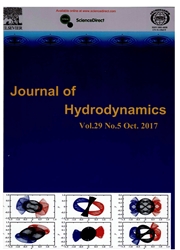

 中文摘要:
中文摘要:
在这份报纸,我们在一只 Clark-Y 水翼船附近为狂暴的 cavitating 流动的 URANS 模拟调查确认和确认(V&V ) 过程。主要焦点在各种各样的理查森的可行性上是在 cavitating 流动模拟的基于推测的无常评估者。不稳定的 cavitating 流动被改正的密度模仿模型(DCM ) 结合了 Zwart 成穴模型。估计的无常被用来为 cavitating 流动模拟评估各种各样的无常评价方法的适用性。比较喜欢的无常评估者包括安全(FS1 ) 的修改因素,这被显示出,安全(FS ) 的因素和格子集中索引(GCI ) 。没有在 V v 水平与成穴显示出一种强壮的关系。进一步的分析显示预言的速度分布,短暂成穴模式和拉长的旋涡的效果被网孔决定高度影响。
 英文摘要:
英文摘要:
In this paper, we investigate the verification and validation(V&V) procedures for the URANS simulations of the turbulent cavitating flow around a Clark-Y hydrofoil. The main focus is on the feasibility of various Richardson extrapolation-based uncertainty estimators in the cavitating flow simulation. The unsteady cavitating flow is simulated by a density corrected model(DCM) coupled with the Zwart cavitation model. The estimated uncertainty is used to evaluate the applicability of various uncertainty estimation methods for the cavitating flow simulation. It is shown that the preferred uncertainty estimators include the modified Factor of Safety(FS1), the Factor of Safety(FS) and the Grid Convergence Index(GCI). The distribution of the area without achieving the validation at the U v level shows a strong relationship with the cavitation. Further analysis indicates that the predicted velocity distributions, the transient cavitation patterns and the effects of the vortex stretching are highly influenced by the mesh resolution.
 同期刊论文项目
同期刊论文项目
 同项目期刊论文
同项目期刊论文
 期刊信息
期刊信息
